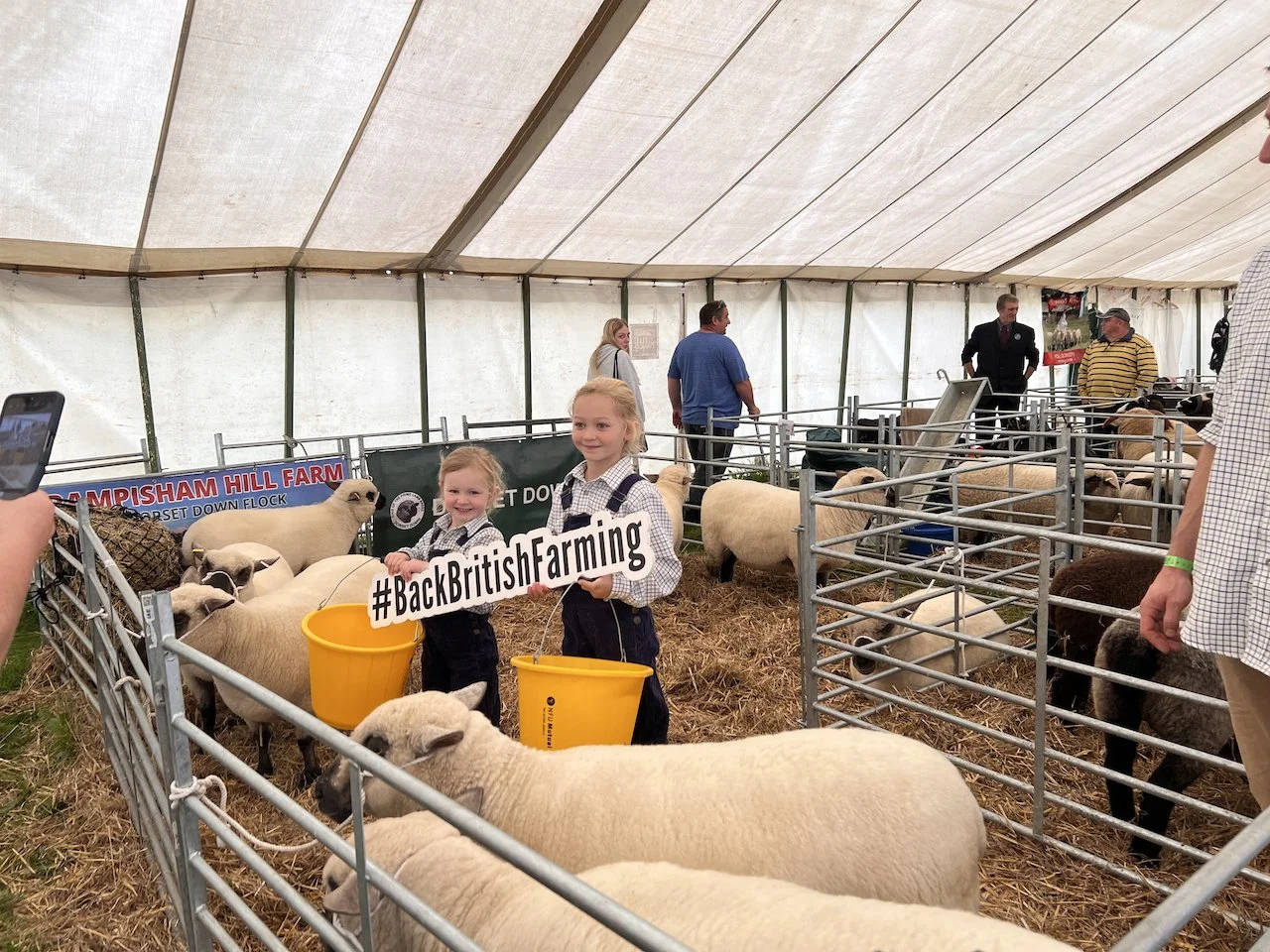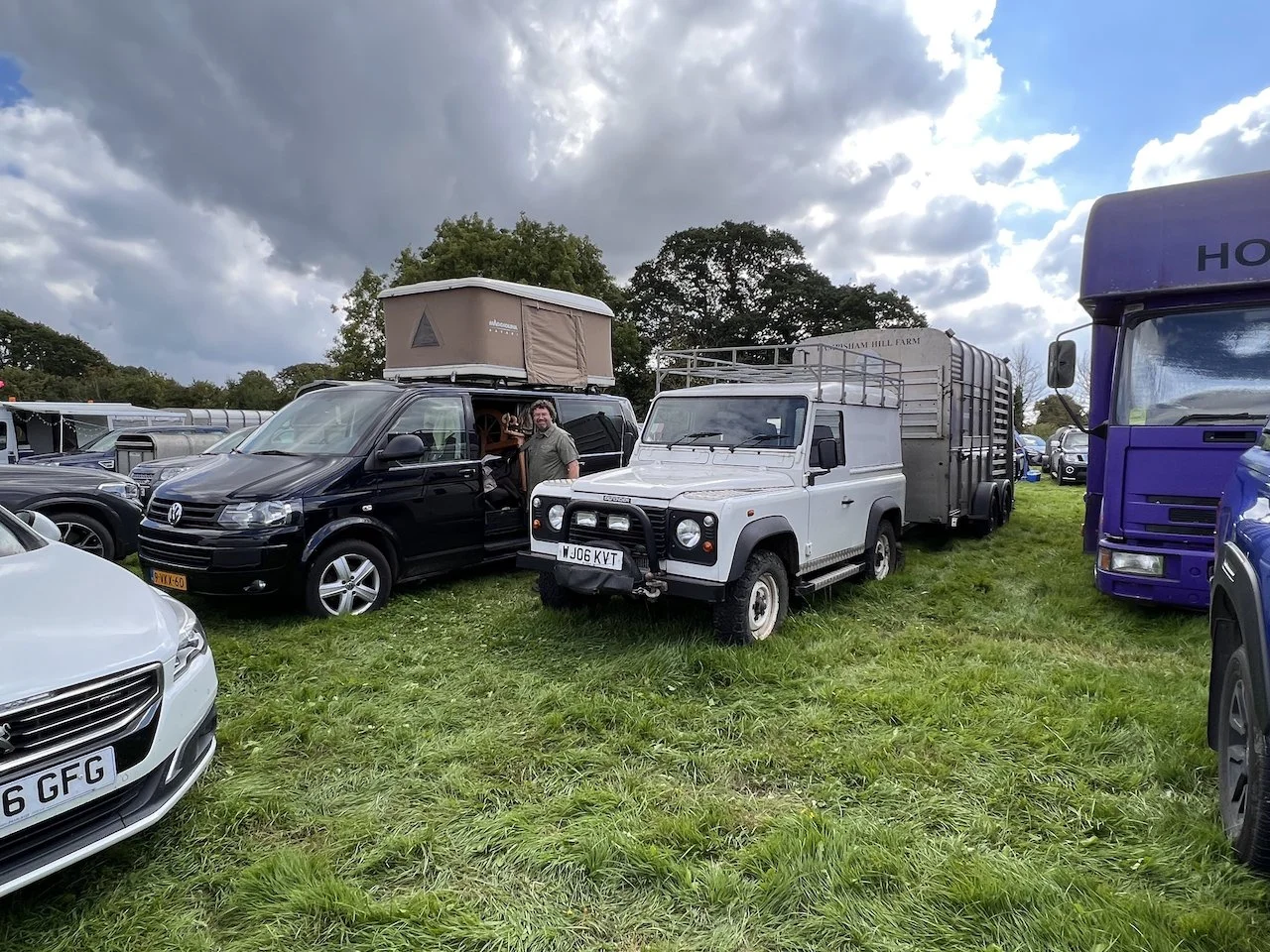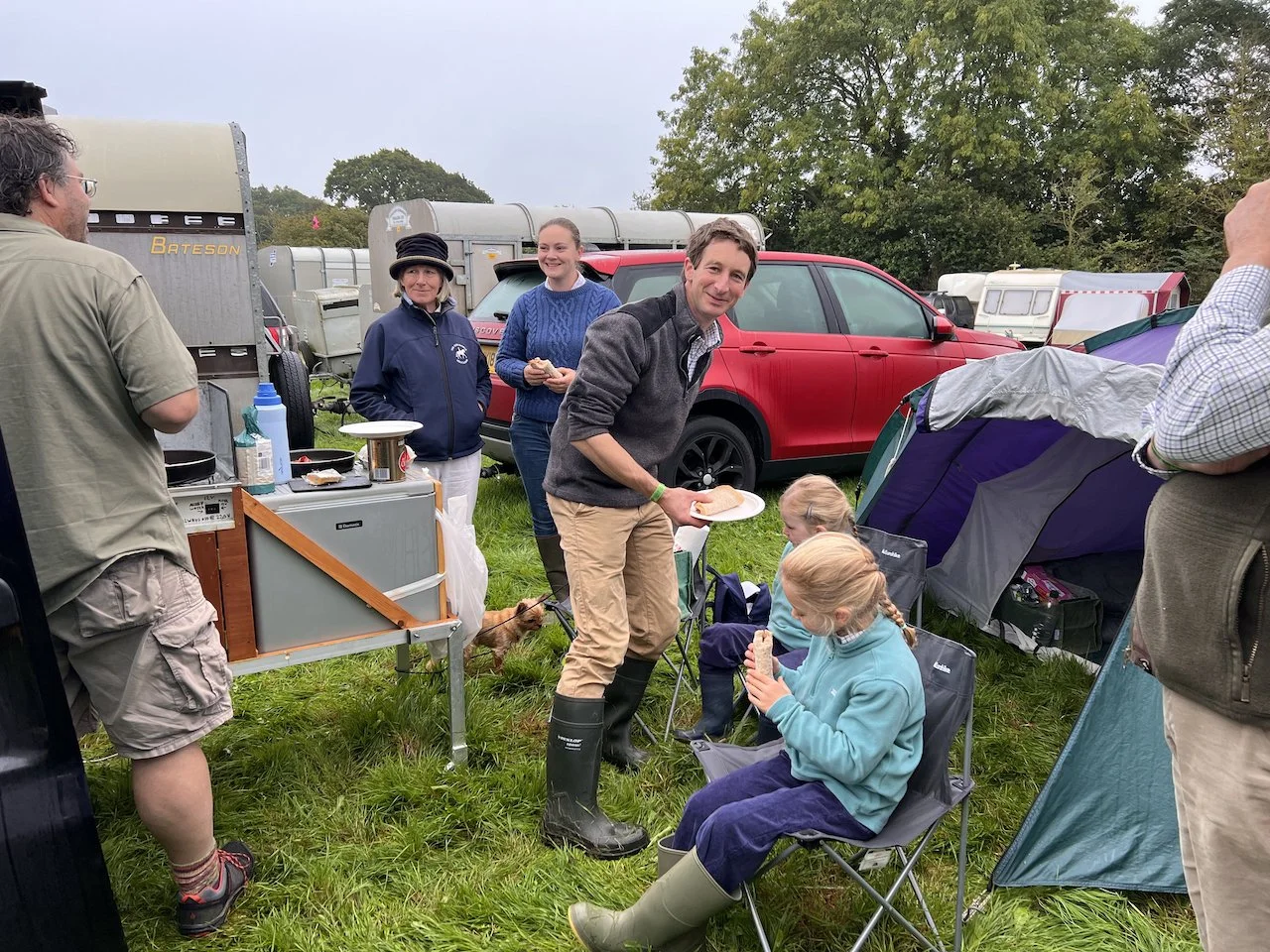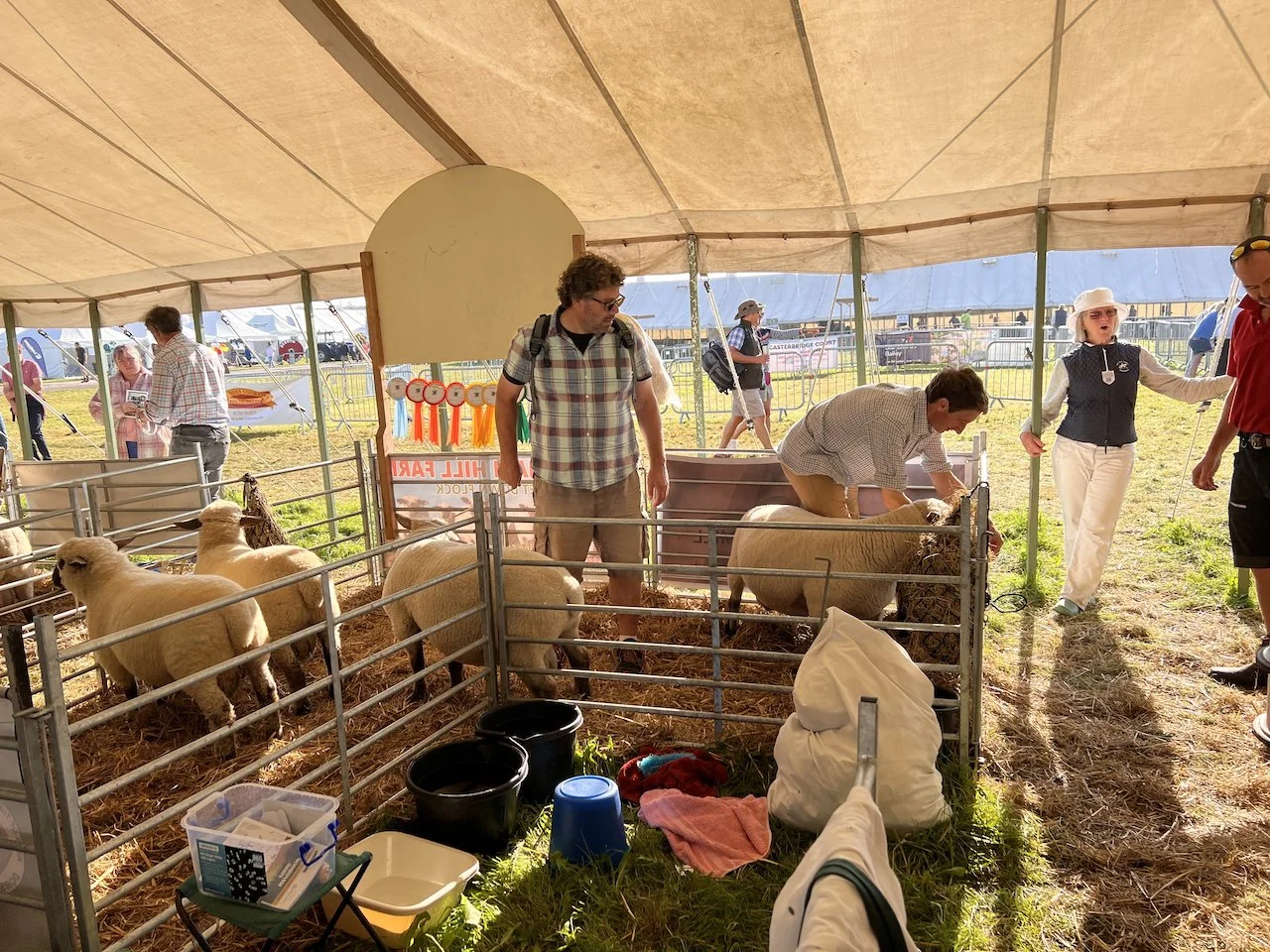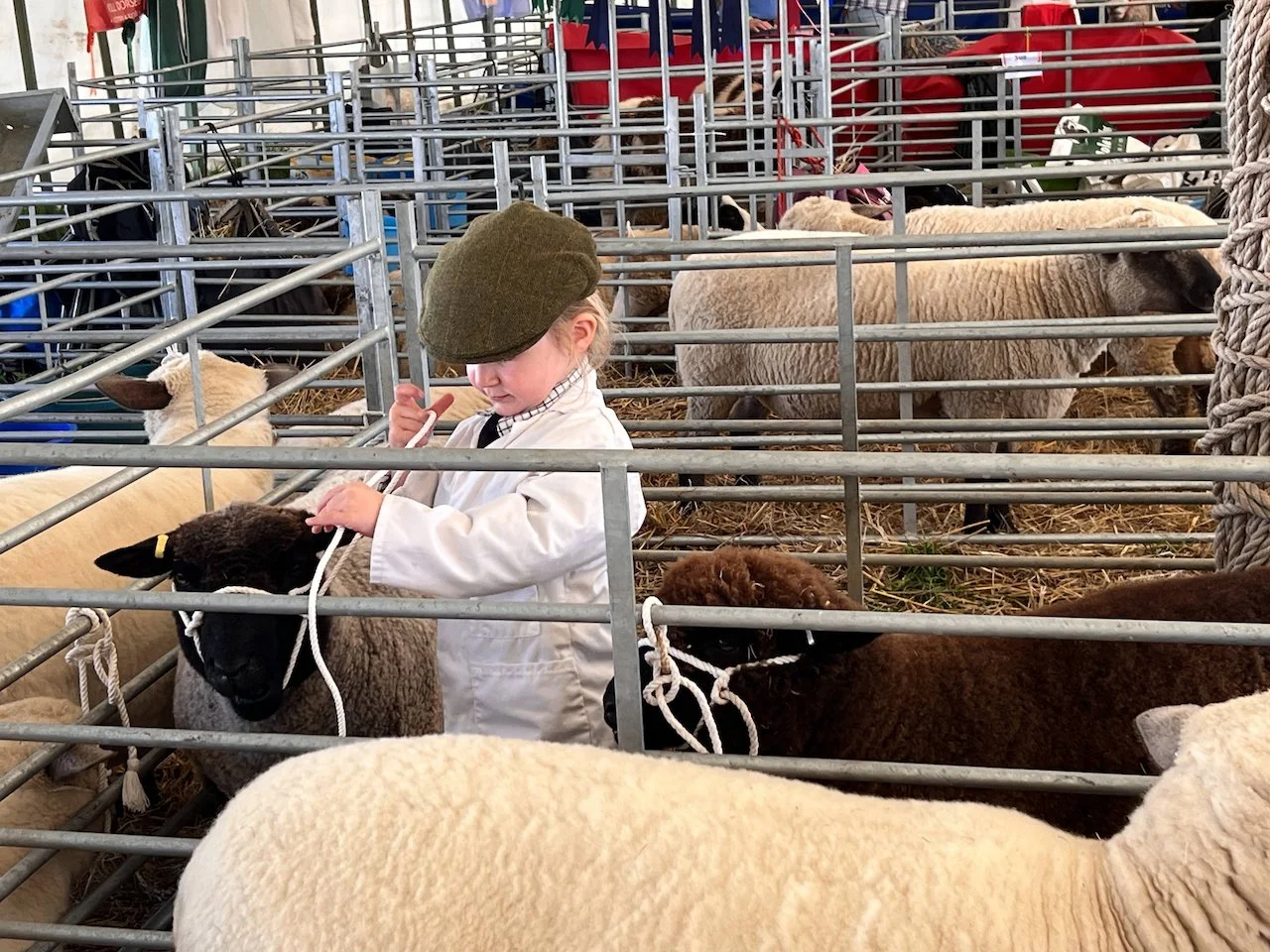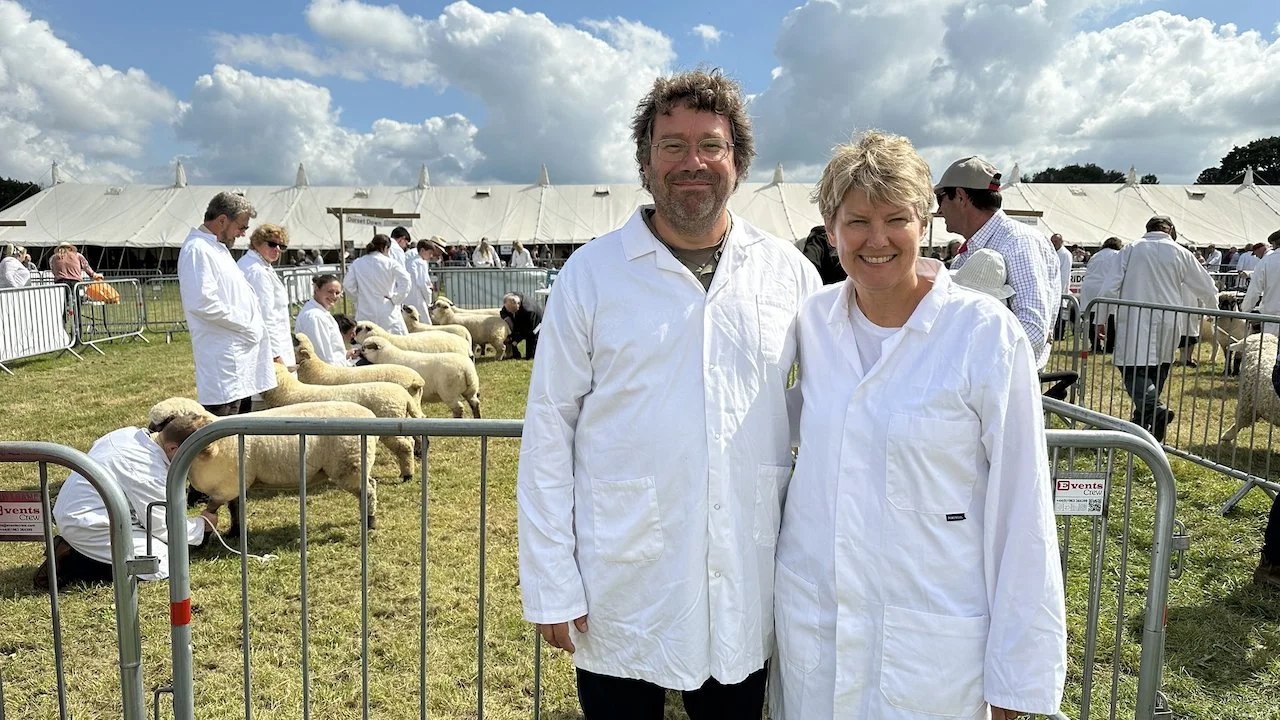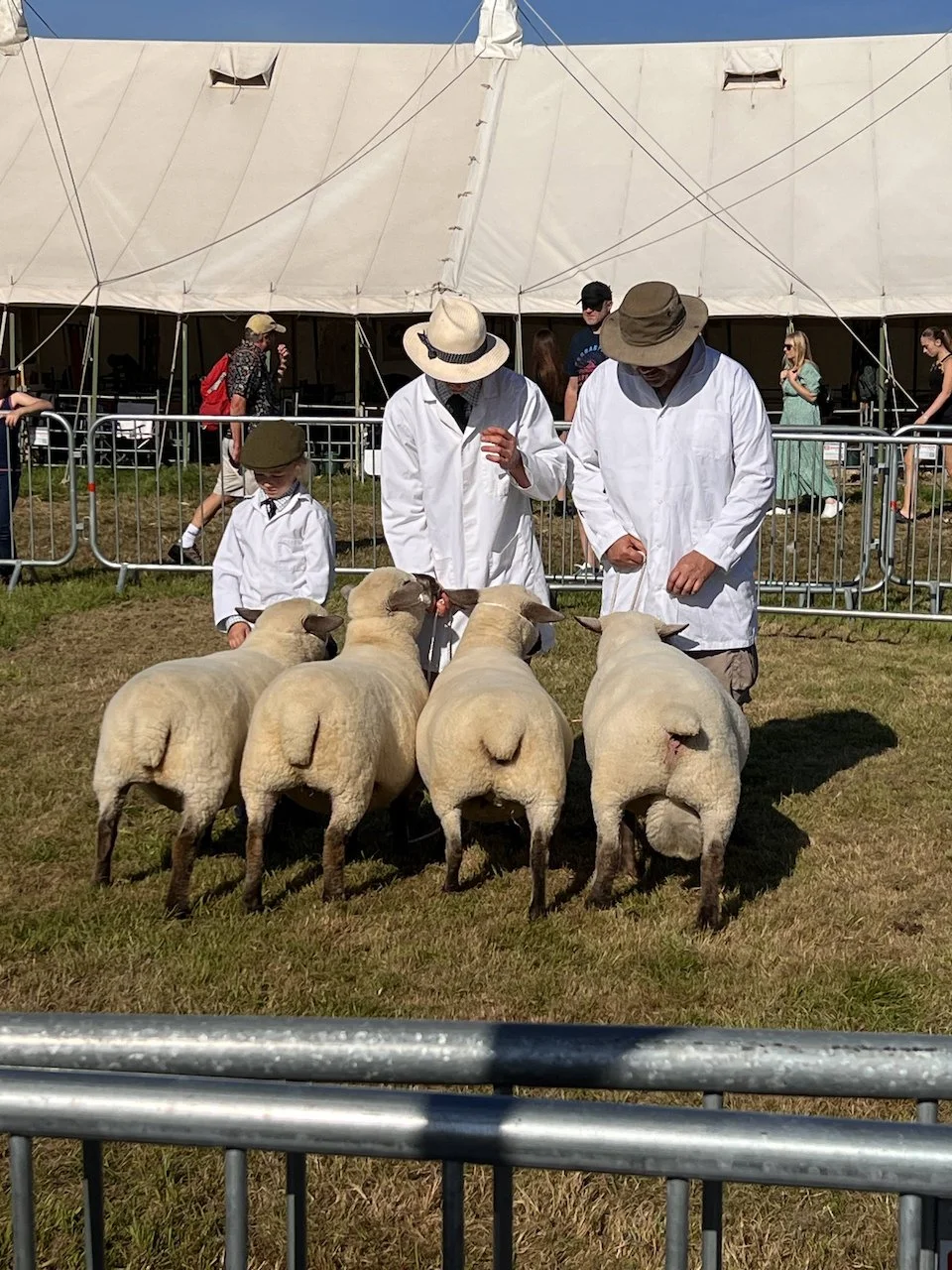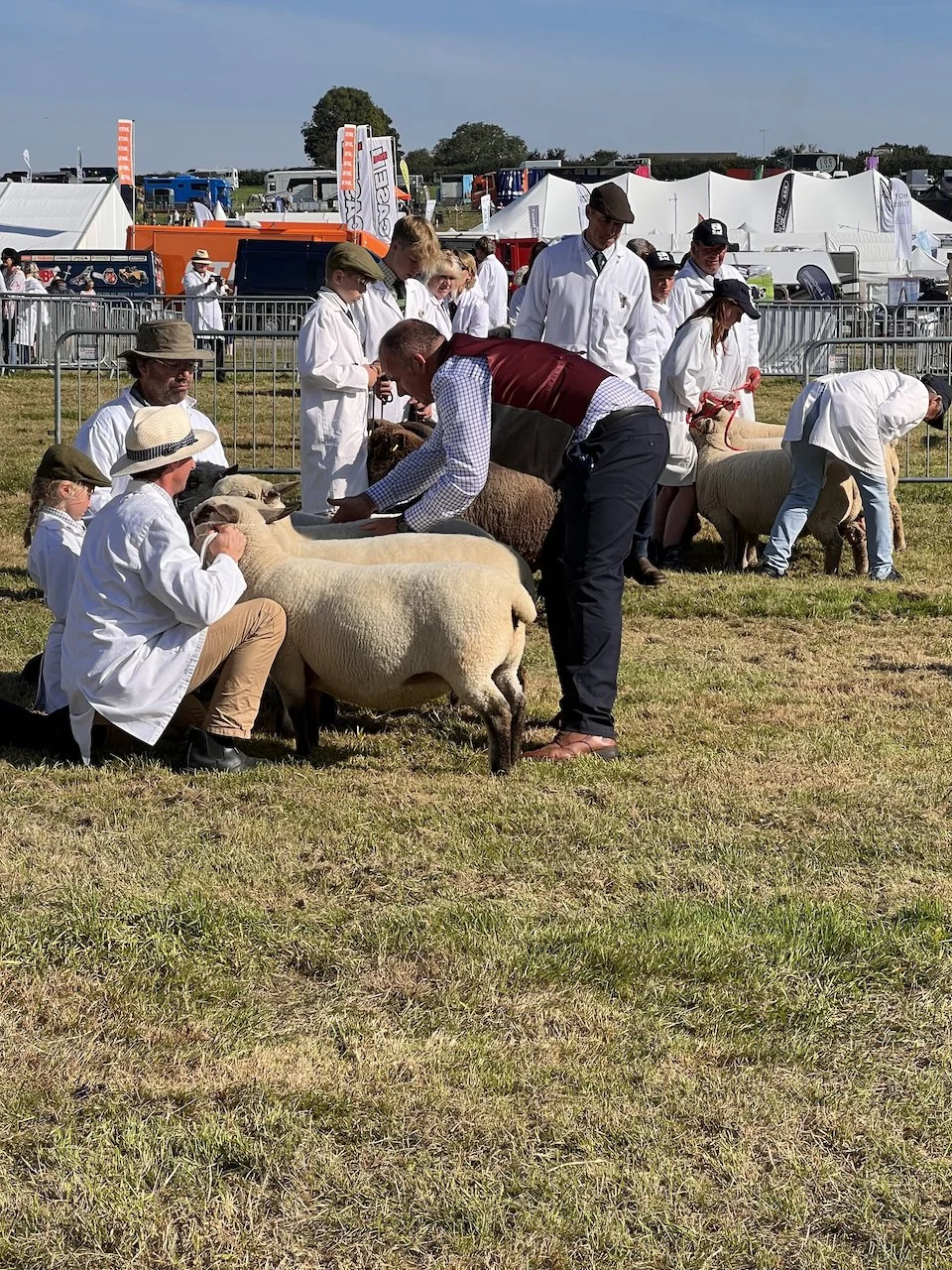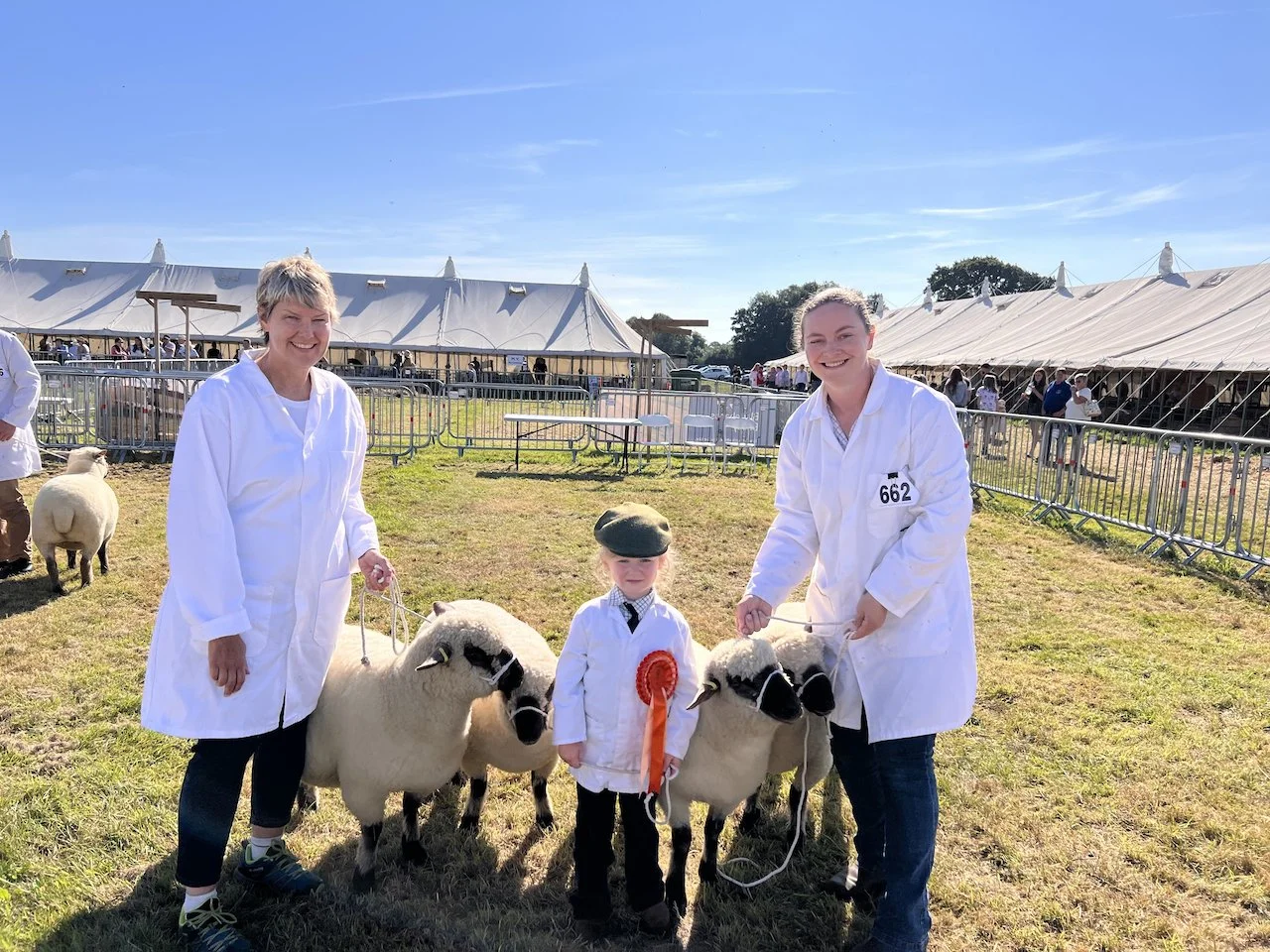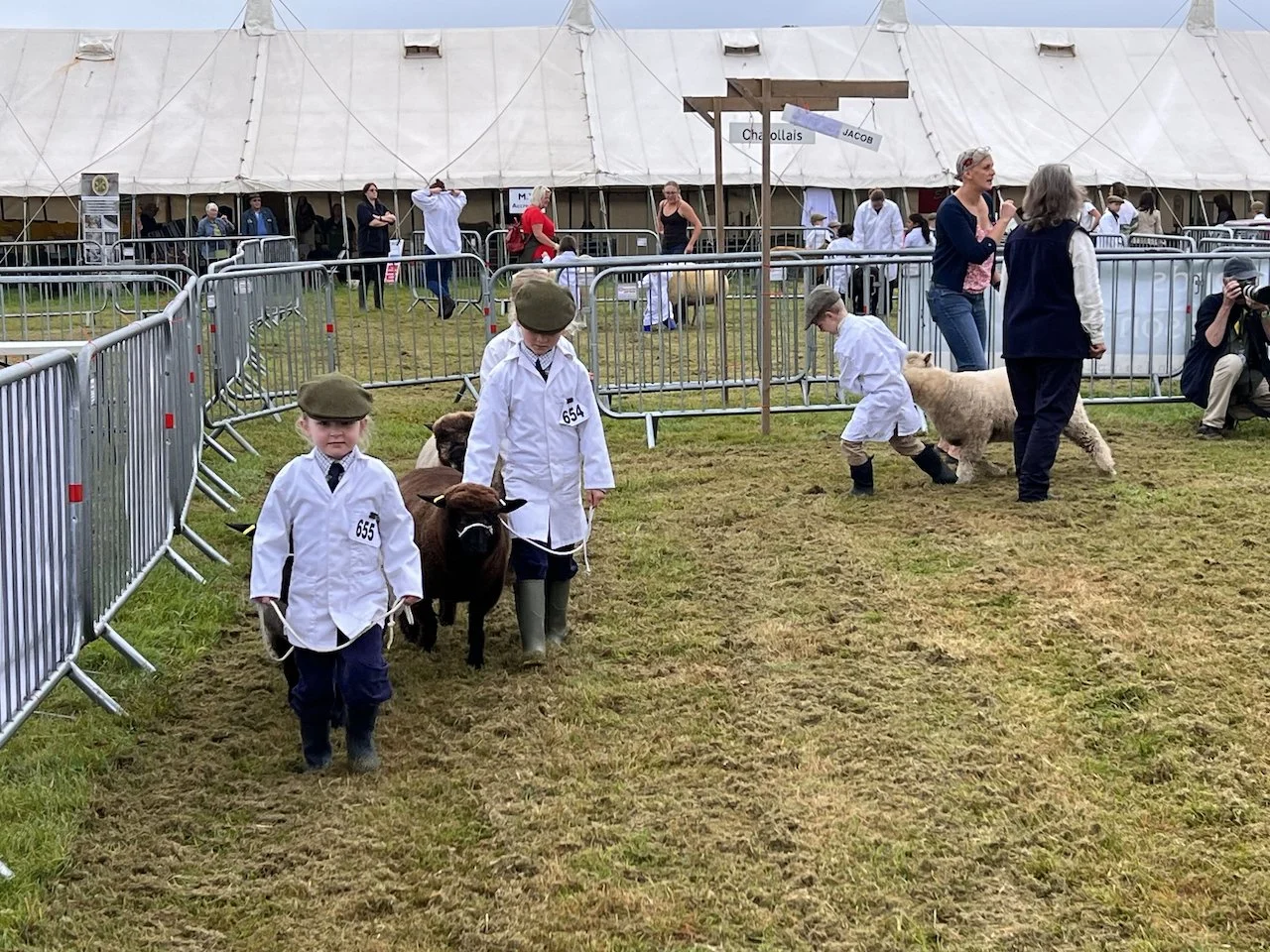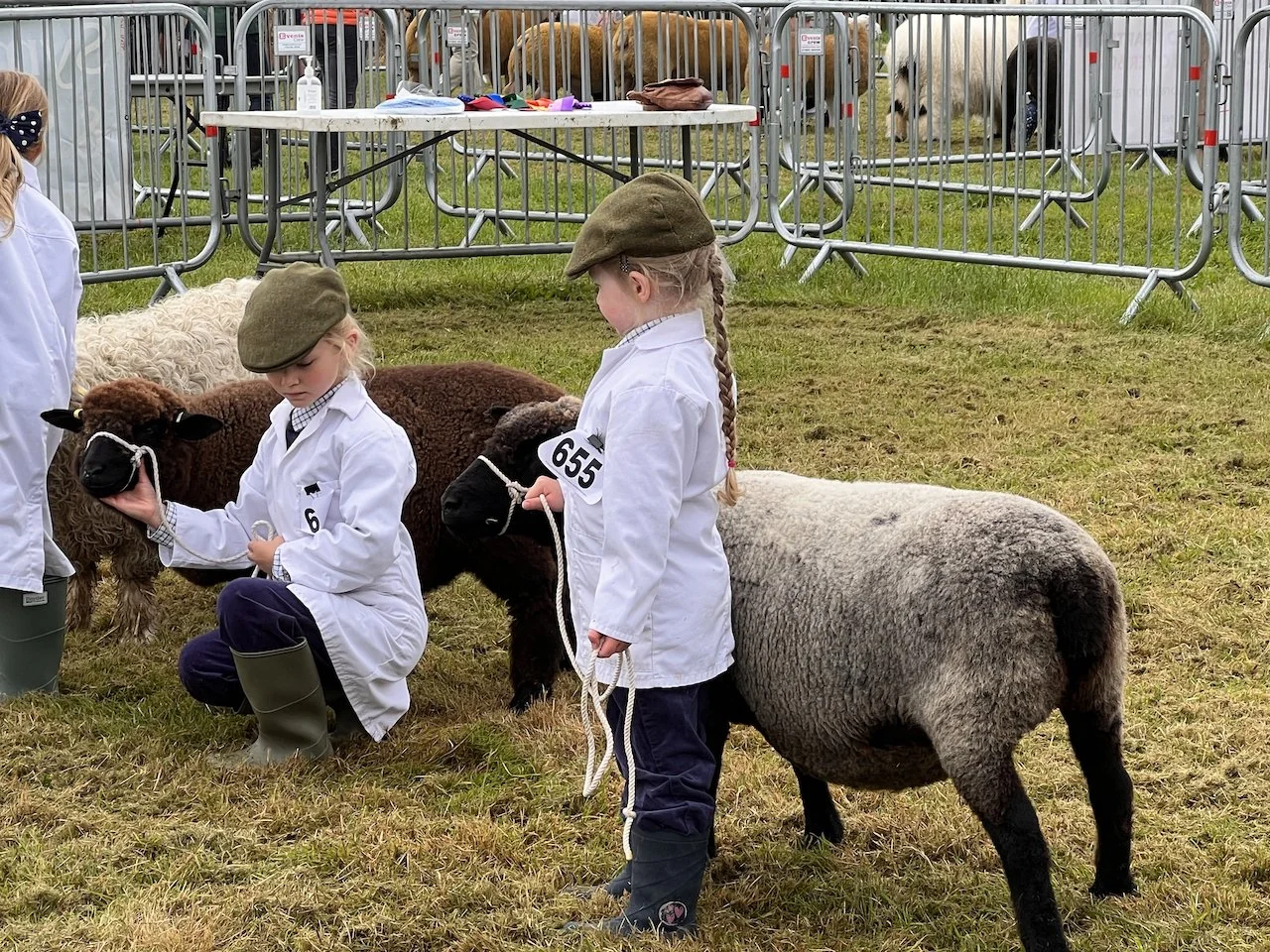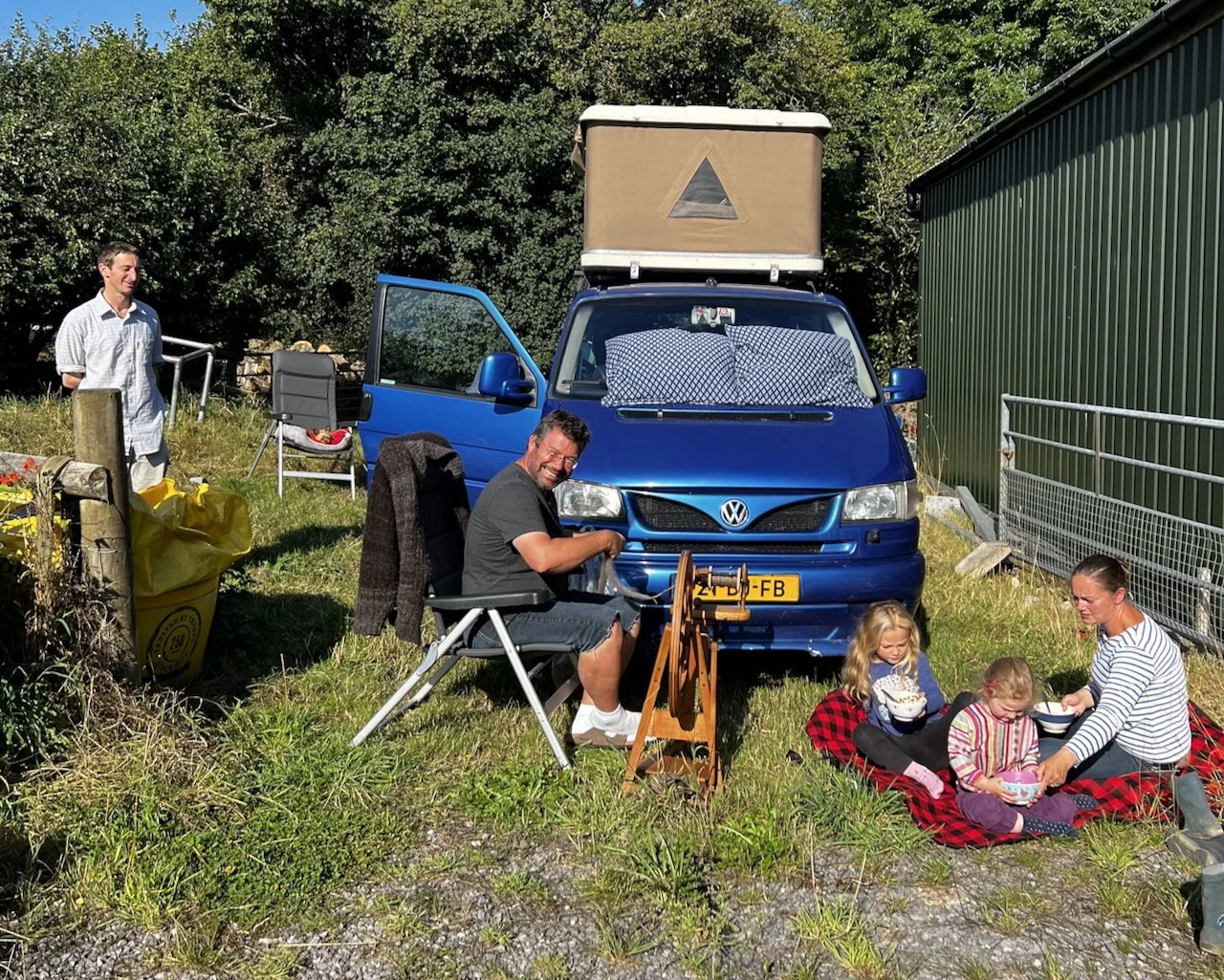Sheep Handler in Training
I was doing my very best to line my sheep up for the judge - square stance and head up. But my sheep was being unruly, standing perpendicular to her flock-mates. I pushed and prodded my ward into shape, and carefully mimicked the actions of my co-handlers. Of all the things I saw myself aspiring to in this life, sheep-handling wasn’t one of them, but here I was, dressed in a long white coat in a show ring at the Dorset County Show, wrestling with a Dorset-Down ewe. The other handlers in my group were managing with relative ease. Especially the four-year-old; clearly this wasn’t her first rodeo.
Our friends David and Ruth are British Farmers, and the Dorset County Show just outside the city of Dorchester is a vital stop-off in their farming almanac, just as it has been for many Dorset farmers since 1840. Last year, the fair happened to be on route to our Dover ferry at the end of our holiday, so we parked in the visitor field and dashed blindly through the fair in search of the sheep tent for a quick hello/goodbye. At the entrance booth, we explained our errand, but the attendant wasn’t having any of it. Twenty-seven pounds luvs, she stated firmly. Clearly, she’d heard the “We’ll just be 10 minutes” story before. Uhm, what if I leave you my cell phone as ransom? I suggested, having learned a thing or two about creativity from Arthur over the years. She agreed.
This might have been a mistake. Not only because the grounds were vast, and I’m not much of a runner, but also because everything was so enticing. We ran past a food hall – the aroma of baked goods causing me to swerve in that direction, just a little. We slowed at the central ring to catch a glimpse of the show-jumping—a loudspeaker announced the status to the thousands, Charlotte Jenkins riding Willowbrook Mist, with a perfect circuit – give them a round of applause folks! We applauded and ran on between two rows of shiny green and red farm machinery with claw-like appendages, and under the Ferris wheel, finally finding the sheep, along with our surprised friends, just beyond the ice-cream queue. We couldn’t believe we’d overlooked the allure of such an event. Should we rebook our ferry? Could we? We couldn’t. Regrettably, we turned and headed off again, as quickly as we’d come. But not before promising ourselves to return for the full weekend the following year.
And we did! This time, we drove onto the grounds through the participants’ gate, with a VIP Pass swinging from our rear-view mirror. We carefully wound our way along a rutted track, keeping our eyes fixed on David’s sturdy white Land Rover, feeling a little like impostors in our polished black van. We passed heaps of hay-bales, steaming manure piles, and temporary toilet blocks along the backside of the livestock pavilions, each labelled for its inhabitants—CATTLE, GOATS, PIGS—eventually arriving behind an expansive three-sided tent labelled SHEEP. We rolled up our own tent between empty livestock trucks and trailers, reinvented for the weekend as camping shelters, and pulled on our boots before heading over to check our flock because, for this weekend, we’re sheep farmers!
I stepped between the tethering ropes and into the marquee, and found Ruth and her girls in their section, busy with chores. Temporary fencing was fashioned into a weekend home for their meticulously turned-out show flock—each member carefully chosen to represent the farm’s practices, and then washed, trimmed, and groomed. The sheep shuffled and bleated in their stalls. Unsure of their unfamiliar digs, they trampled the fresh hay underfoot, sending the smells of autumn farming into the air. Both little girls in flat tweed caps, Tattersall brushed cotton shirts, and blue overalls, with their miniature white show coats hanging at the ready, were in the stalls diligently checking their sheep, Marmite and Nutella. The seven-year-old filled and hoisted a water bucket while the four-year-old fiddled with Nutella’s lead rope, carefully attaching it to a fence with a perfect knot, testing the length, untying it, and attaching it again so the ewe couldn’t drop and roll, ensuring her pristine show-shape.
I wandered out to the competition rings that filled the void in the centre of the U-shaped pavilion, and hung over the rails to watch the parade of sheep; lambs, rams, and ram/ewe combinations, every configuration that might present the ideal Dorset-Down —medium-sized creamy white body with brown ears, and black nose protruding from a woolly face. Ruth joined me. That judge is most interested in a square bottom, she pointed at a tall serious fellow in his own Tattersall shirt dressed up with a tweed vest, and sure enough, the judge took a step back, cocked his head and held his chin between his thumb and fore-finger, gazing steadily at the hind-end of a ram before walking forward and digging his fingers deep into the dense wool of its back, feeling for meatiness, and good muscle form. Right, we’re up next, said Ruth, c’mon then. And with some trepidation, I followed her back to our stalls, donned a white cotton coat, took the rope attached to a ewe proffered by David, and paraded into the ring behind Ruth and the four-year-old.
Once my sheep was square, I stole a glance across the ring to find our other team - David handling two ewes, the seven-year-old efficiently managing one, and Arthur, holding tight to an agitated ram as the judge weighed its scrotum in his hand. Don’t make eye contact with the judge, whispered Ruth, drawing my attention back to my task. Keep your head down and stay out of the way - just follow what I do. Right – easier said than done. I knelt in front of my ewe while the judge felt around her hind quarter, scrabbled to the side so he could reach deep into her mouth to examine her incisors with his educated fingers, and then back to the front - I tried to make myself invisible as he poked and prodded my sheep. He finished his rounds and stepped to the centre, gazing back and forth across the ring, taking his time, sizing up the groups, and indicating with his shepherd’s crook that this group or that should step forward. He pointed to our group, and we shuffled our 22 feet forward, doing our best to keep form. He gazed around again, sent another group back with the flick of his hand, stepped forward, and handed us a large orange rosette - sixth place! As a rookie, any colour ribbon made my day.
We spent two days at the Dorset County Show pretending to be sheep farmers, but it was the discipline and devotion of the real farmers—young and old—that left a deep impression on me. Back at the farm, the show sheep were turned out into the field with the rest of the flock, and the little girls charged in behind them, equally happy to be free again from the constraints of the temporary fencing. Watch me! the seven-year-old called out as she threw herself head-first over a fence rail, landing with ease on her hands while clearing the rail with her feet. She galloped off for another round. There’s Arco! shouted the four-year-old, easily picking out one white sheep, named after our pup, from the hundred or so others in the field. She ran forward and gave it a little snuggle.
Behind every colourful rosette is a story of early mornings and endless nights, careful and difficult decisions, and constant learning. Every sheep represents months and years of setbacks, victories, and unwavering perseverance. In the case of David, Ruth and their girls, that knowledge is being passed down from one generation to the next with care, dedication, and passion.
Respect
(Choose landscape on mobile to see photo descriptions)
